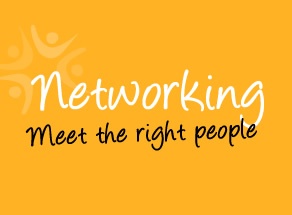
Recruitment Best Practices Are Needed to Activate Hispanics in STEM Education and Careers
Es necesario implementar mejores prácticas de reclutamiento para promover la participación de los hispanos en la educación y las carreras STEM
11/29/2013 11:16AM | 9435 viewsWhen it comes to STEM education, the U.S. is not faring well compared to other countries. According to World Economic Forum statistics cited by Level Playing Field Institute, the nation ranks “52nd in the quality of mathematics and science education” and “27th in developed nations in the proportion of college students receiving undergraduate degrees in science or engineering.”
They also found that the majority of our graduate school students
are foreign-born, and the majority of engineers who receive a Ph.D. from our
universities are not U.S. citizens. It’s no wonder our overall global
competitiveness is ranked fifth – and continues to move in the wrong direction.
“The solution to America's competitiveness problem,”
according to the National Action Council for
Minorities in Engineering, “is to activate the hidden workforce of young
men and women who have traditionally been underrepresented in STEM careers –
African Americans, American Indians, and Latinos."
This solution is already resonating at City of Hope, especially
with regards to the Hispanic community, which represents 71% of the population
in our catchment area in the San Gabriel Valley northeast of Los Angeles. Throughout
L.A. county, Hispanics are not only the largest minority group (48%), but
larger even than the non-Hispanic white population (32%).
Recognizing a need to connect with local students and their
families and introduce them to the value of a STEM education and the many careers
it can open doors to, City of Hope partnered with the Duarte Unified School
District to bring unique educational opportunities and experience to the
community. As a result, today’s 2nd grader will have interacted with City of
Hope scientists – through classroom visits, science activities and field trips
– a minimum of three times by the time they reach high school. For high school
juniors and seniors, we take it a step further – offering a summer research
program in our community teaching lab, where they can conduct real cancer
research on team-based projects.
Students can then continue doing research during the school
year by being paired with an appropriate mentor from City of Hope. From here,
they can go on to paid internships at the Eugene and Ruth Roberts
Summer Student Academy at City of Hope, as either a high school or college
student.
This year, City of Hope sponsored education and recruitment
events aimed specifically at Hispanic college students interested in – or who
might not yet have considered – a science or related career in healthcare or biomedicine.
These events included an exclusive
Hispanic Leadership Program held in July at Rice University and the Jones
Graduate School of Business, and a five-city College Leadership Tour currently
taking place across the country.
Our commitment to education and diversity does not stop
there. Students can earn their doctorate at City of Hope's Irell & Manella Graduate
School of Biological Sciences, in an academic setting that fosters diverse
talent, innovation and collaboration, and the direct application of research
discoveries and scientific breakthroughs to curing disease and clinical
problems.
The ultimate goal is to have a diverse workforce that
mirrors the communities we serve so that we can better understand their needs
and deliver the appropriate care for prevention and treatment, as well as move
our research in the direction of the most prevalent life-threatening and
chronic diseases.
But to reach that goal, we have to stack the educational
pipeline with more Hispanics, not just in our little corner of the world, but
throughout the country. There are 50.5
million people of Hispanic origin living in America today – and they are the
largest minority in 21 states – yet only 5 percent of U.S. physicians are
Hispanic.
What is required now is a new emphasis on recruitment
and outreach best practices geared to minority groups, and Hispanics in
particular. Here are three best practices that are at the top of the list:
- Communicating more authentically with diverse candidates, in culturally relevant ways that come most naturally to them. This will require looking through their lens, and no longer forcing everyone to see through the same (your) lens. Replace the hard sell by becoming more approachable and building a warm rapport that empowers students to believe in themselves and encourages them to reach for their goals.
- Supporting the resources, tools and technology to begin long-term relationship building. For example, a proper database management system will enable you to effectively identify diverse candidates – and then maintain ongoing communication with them tailored to their specific educational needs and desired experience. At City of Hope, for instance, we promote our welcoming environment where students will grow and be challenged by high-caliber scientists.
- Being more proactive in your thought leadership and recruitment investments. Facilitate your efforts by reaching out to educational, business, professional, community and government organizations. For Hispanics, there are many such groups – such as the National Hispanic Science Network, and Latino Business Student Associations on a number of campuses.
Going forward, I’ll be highlighting some of our most
promising recruitment and outreach success stories who have come through our
educational programs. City of Hope is also hosting an original thought
leadership series on December 2 – “Strengthening
the Hispanic Pipeline in the Healthcare and Biomedical Fields” – to help build
greater awareness about educational opportunities, career management,
recruitment, mentoring, networking, and professional development.
Cuando se trata de la educación STEM, Estados Unidos se queda corto comparado con otros países. Según las estadísticas del Foro Económico Mundial citadas por el Level Playing Field Institute, la nación ocupa el "número 52 en la calidad de educación en materia de matemáticas y ciencias" y "el número 27 en las naciones desarrolladas en proporción de los estudiantes universitarios que reciben licenciaturas en estudios de ciencias o ingeniería".
También
encontraron que la mayoría de nuestros estudiantes de posgrado son nacidos en
el extranjero, y la mayoría de los ingenieros que reciben un doctorado de
nuestras universidades no son ciudadanos estadounidenses. No es de sorprender
entonces que en cuanto a nuestra competitividad global estamos en quinto lugar,
y que las cosas continuarán avanzando en esa dirección.
"La
solución al problema de la competitividad de Estados Unidos," según el
Consejo Nacional de Acción para
las Minorías en la Ingeniería, es activar la fuerza
de trabajo oculta en hombres y mujeres jóvenes que han sido tradicionalmente minimizadas
dentro de las carreras STEM, es decir los afroamericanos, nativos americanos y
latinos."
Esta
solución ya está teniendo resonancia en City of Hope, especialmente con
respecto a la comunidad hispana, que representa el 71% de la población en el
área de captación en el valle de San Gabriel al noreste de Los Ángeles. A lo
largo del Condado de Los Ángeles, los hispanos son el mayor grupo minoritario
(48%), más grande incluso que el grupo conformado por la población blanca no
hispana (32%).
Ante
la necesidad de conectar con los estudiantes y sus familias, e inculcarles el
valor de una educación STEM y las muchas carreras a las que pueden tener acceso,
City of Hope se asoció con el Distrito Escolar Unificado de Duarte para ofrecer
oportunidades educativas y experiencias únicas a la comunidad. Como resultado,
los estudiantes del segundo grado podrán relacionarse con científicos de City
of Hope, mediante visitas al aula, actividades científicas y excursiones. Para
los estudiantes del tercer y cuarto año de secundaria dimos un paso más: ofrecemos
un programa de investigación durante el verano en nuestro laboratorio de
enseñanza comunitario donde pueden realizar, en equipo, un proyecto real de
investigación acerca del cáncer.
Los
estudiantes pueden continuar su investigación durante el año escolar apoyados
adecuadamente por un mentor de City of
Hope. Y desde ahí, durante su educación
secundaria o universitaria, pueden realizar
prácticas remuneradas en el Eugene and Ruth Roberts
Summer Student Academy de City of Hope.
Este
año, City of Hope patrocinó eventos educativos y de reclutamiento dirigidos
específicamente a estudiantes hispanos interesados en el área de la ciencia,
salud o biomedicina. Estos eventos incluyen un Programa de Liderazgo Hispano
exclusivo que se celebra en julio en la Universidad Rice y la Jones Graduate
School of Business, y un Tour de Liderazgo Universitario por cinco ciudades que
actualmente se está llevando a cabo en todo el país.
Nuestro
compromiso con la educación y la diversidad no se detiene allí. Los estudiantes
pueden obtener su doctorado en Irell & Manella Graduate School of
Biological Sciences de City of Hope, en un entorno académico que fomenta diversos
talentos, la innovación, colaboración, y la aplicación directa de los descubrimientos,
investigaciones y avances científicos para curar enfermedades y encontrar
soluciones a problemas clínicos.
El
objetivo final es tener una equipo de trabajo conformado por miembros de las comunidades que servimos para
así entender mejor sus necesidades y
ofrecer servicios adecuados para la prevención y el tratamiento, así como orientar
nuestra investigación hacia las enfermedades crónicas y mortales más comunes.
Pero,
para alcanzar esa meta, tenemos que aumentar el número de estudiantes hispanos,
y no sólo en nuestro pequeño rincón del mundo, sino en todo el país. Hoy en
día, hay 50.5 millones de personas de origen hispano en Estados Unidos, son la
minoría más grande en 21 estados no obstante sólo el 5% de los médicos de
Estados Unidos son hispanos.
Lo
que se necesita ahora es un nuevo énfasis en el reclutamiento y la divulgación
de mejores prácticas orientadas a grupos minoritarios, y a los hispanos en
particular. Estas son las tres prácticas relevantes:
- Comunicación
más cercana y profunda con los candidatos. Esto requerirá mirar a través de
sus ojos y evitar la tentación de obligarlos a ellos a mirar las cosas como
uno las mira. Lo que significa ser más accesible y construir una relación
cálida que anime a los estudiantes a creer en sí mismos, alentándolos a
alcanzar sus metas.
- Apoyar
los recursos, las herramientas y la tecnología para iniciar la
construcción de relaciones a largo plazo. Por ejemplo, un sistema de
gestión de base de datos adecuada que permita la identificación eficaz de candidatos
diversos, y el mantenimiento de la comunicación permanente adaptada a las
necesidades educativas específicas y la inclinación de cada candidato. Como
es el caso en City of Hope, donde promovemos un ambiente acogedor en el
cual los estudiantes pueden crecer ante los retos que promueve su relación
y contacto con científicos de alto
calibre.
- Desarrollar
iniciativas, liderazgo y opciones de reclutamiento. Para minimizar
esfuerzos estar en contacto con organizaciones educativas, empresariales,
profesionales, comunitarias y gubernamentales. Para los hispanos, hay
mucho de donde escoger, como la Red Hispana Nacional de Ciencia y las Asociaciones
de Estudiantes de Negocios Latino en diversas universidades.
A
futuro, sólo voy a resaltar algunas de nuestras historias de reclutamiento más
prometedoras y los éxitos de alcance comunitario que hemos vivido en nuestros
programas educativos. City of Hope también estará presentando una serie acerca
del liderazgo y el pensamiento creativo el
2 de diciembre, “Strengthening the
Hispanic Pipeline in the Healthcare and Biomedical Fields” para ayudar a construir
una mayor conciencia acerca de las oportunidades educativas, la gestión de
carrera, el reclutamiento, la tutoría, la creación de redes y el desarrollo
profesional.







Post your Comment
Please login or sign up to comment
Comments